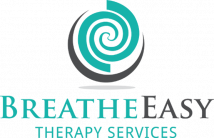Our brains are amazing things. They store our memories, send us feel-good hormones, and are designed to protect us.
For instance, our famed fight or flight response kicks in when we encounter a dangerous situation. Our advanced brains instantaneously determine our survival odds and give us a route to safety.
Sometimes our brains can overprotect, however, and that’s when we are stuck in a survival cycle. Known over the years as shell shock or combat fatigue, the psychology world now recognizes this condition or state as Post Traumatic Stress Disorder (PTSD) (Traumadissociation.com, 2023).
While it is expected to experience symptoms such as fear, sadness, or depression after a traumatic or dangerous event, they pass naturally and often without significant aftereffects. However, when the feelings persist or become chronic, we may feel stressed or frightened even after the danger has passed.
Enter PTSD.
According to NIMH (2022), PTSD symptoms are broken into four categories: reexperiencing, avoidance, arousal and reactivity, and cognition and mood. Reexperiencing refers to flashbacks, bad dreams, and frightening thoughts and is often triggered by words, objects, and situations that serve as reminders of the experience. Avoidance symptoms are characterized by avoiding thinking about or having feelings related to the event. A change in a routine sometimes accompanies avoidance. If we’re experiencing arousal or reactivity symptoms, we can be easily startled and experience sleep disturbances and angry outbursts. Lastly, cognition and mood symptoms can be demonstrated by memory loss, negative thoughts, guilt and blame, and a loss of interest in previously enjoyed activities.
Specifically, a PTSD diagnosis is considered if someone is experiencing the following symptoms: one reexperiencing symptom; one avoidance symptom; two arousal and reactivity symptoms; and at least two cognition and mood symptoms (NIMH, 2022). It’s worth noting that only a professional can offer this diagnosis. Also, these conditions must persist for at least a month before a diagnosis can be provided.
Risk for developing PTSD include: Risk factors that may increase the likelihood of developing of PTSD include: exposure, childhood trauma, little or no social support after the event, compounding stress such as a loss of job or home, and individual or family history of substance abuse (NIMH, 2022). Meanwhile, the following can help avoid developing PTSD: seeking support, reconciling your reactions, coping strategies, and the ability to move on without excessive fear (NIMH, 2022).
Regarding brain activity, researchers have found that PTSD can trigger a response whereby our brains perceive danger everywhere. Indeed studies have shown that the brains of individuals with PTSD have enhanced processing of trauma-related stimuli and decreased processing of neutral stimuli (Karl et al., 2006).
In other words, we are hyper-focused on things that could hurt us, which to our brains, is everything. How do we learn how to cope? We must play cranial electricians and “re-wire” our brains.
A standard PTSD treatment is talk therapy (NIMH, 2022). In talk therapy or psychoanalysis (think Freud and a couch), we can recount our experience in a safe space and desensitize ourselves to those harming triggers. Talk therapy can also teach relaxation and anger control skills, help us identify feelings, and focus on changing harmful reactions (NIMH, 2022). Similarly, Cognitive Behavioral Therapy (CBT), which examines the link between behavior and thoughts or thinking patterns, can also help. CBT relies on destigmatizing a traumatic event through exposure therapy or cognitive restructuring (NIMH, 2022).
While in treatment, there are myriad ways to make a recovery easier.*
- Reduce stress through mild physical activity or exercise.
- Set realistic goals.
- Be kind to yourself by breaking up large tasks into small ones.
- Socialize with others.
- Trust others and inform them about your triggers.
- Celebrate progress, not perfection.
- Seek comfort.
*Information courtesy NIMH (2022)
PTSD takes time to heal, but to start the process, you can talk to professionals offering strategies to move past the traumatic event. A trained professional can offer effective coping mechanisms to help in other aspects of life.
For more information on how Breathe Easy Therapy Services can help, contact us here.
References
Karl, A., Schaefer, M., Malta, L. S., Dörfel, D., Rohleder, N., & Werner, A. (2006). A meta-analysis of structural brain abnormalities in PTSD. Neuroscience & Biobehavioral Reviews, 30(7), 1004-1031. 10.1016/j.neubiorev.2006.03.004
National Institute of Mental Health. (2022) Post-Traumatic Stress Disorder. https://www.nimh.nih.gov/health/topics/post-traumatic-stress-disorder-ptsd
Smith Hayduk, Kelsie. (2022) Researchers reveal how trauma changes the brain. NeURoscience https://www.urmc.rochester.edu/news/publications/neuroscience/researchers-reveal-how-trauma-changes-the-brain
Traumadissociation.com. (2023) History of PTSD. http://traumadissociation.com/ptsd/history-of-post-traumatic-stress-disorder.html.
Zhu, X., Suarez-Jimenez, B., Lazarov, A. et al. Sequential fear generalization and network connectivity in trauma exposed humans with and without psychopathology. Commun Biol 5, 1275 (2022). https://doi.org/10.1038/s42003-022-04228-5





